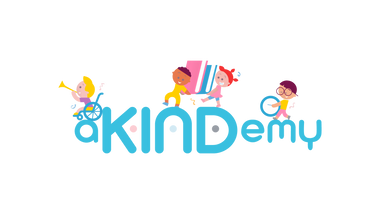
Body - Image, Boundaries and Consent
Body - Image, Boundaries and Consent
Lizzie DeYoung Charbonneau, author of the children's book - Your Whole Body: From Your Head to Your Toes, and Everything in Between! shares her expertise on the topic of BODY. She wrote an inclusive book for children about the entire body, because she believes it is important for young children to know the names of all of their body parts.
Let's explore the human body! Each person's body is amazing and different. We're different colors, different sizes, and different shapes. Our bodies can also do different things. For example, some people see clearly, so people see blurrily, and some people don't see at all. These differences make us unique and special! Let's dive in and learn about how our bodies work, our differences, and our similarities!
Before you begin conversations about bodies with your toddler, reflect on your values around bodies: How do you feel about different body parts? Are there some that you think are better than others? Are there some that make you uncomfortable (e.g., genitals)? Do you believe some body types are “better” than others? Why? Now reflect on the values you want your toddler to have.
Your kid likely has many questions about their body, the different parts, and how they work. Do your best to answer their questions honestly and clearly, even (especially!) questions about their genitals. When answering questions about genitals, use their proper names, and do not shame your child for asking the question. Answering questions about genitals in an honest, straightforward, and uncritical way promotes a positive body image and sets the foundation for future conversations about bodies.
Your child may also ask about differences they see in others, like skin color or disability. While a child’s curiosity is terrific and should be encouraged, it is not the other person’s responsibility to educate your child. If your child asks a question like, “what happened to you?” to someone with a visible disability, remind them that it is a personal question, and that the other person doesn’t need to answer. Then later, you can discuss what might have happened and why the other person may not want to talk about it with someone they don’t know. An excellent book around this topic is “What happened to you?” by James Catchpole.
If you’re unsure how to answer one of your child’s question at the moment, let them know that you need some time to come up with an answer, and then make sure to return to the question later.
Below are some age-appropriate and child-friendly ways to engage our children in the theme of BODY.
For 0-2 Year Olds
- Sing “Head, shoulders, knees, and toes” together! Included in your box are the song lyrics and motions. Get creative and add in other body parts!
- Point to different parts of your body and name them for your child. Make it playful! Wiggle each body part around as you name it. Try using the wrong body part name occasionally, like calling your mouth your foot, and see if your toddler notices! Kids love to correct their parents.
- Read lots of books together about bodies, body positivity, and how the body works so your toddler learns from an early age how amazing their body is!
For 3-5 Year Olds
- Play a dice game with body parts! Create 2 large dice using old tissue boxes or using the included templates. On one die, write a body part on each side: shoulder, elbow, hand, knee, foot, and head. On the other die, write actions: bend, shake, pat, wiggle, point, and twist. Throw the dice and do the action body part combination that comes up!
- Sing “Head, shoulders, knees, and toes” together! Included in your box are the song lyrics and motions. Get creative and add in other body parts!
- Name the body parts! Use the included outline of a body, color it in, then label the different body parts.
6-9 Years
You and your child list three things your child is good at and three things they like about themself. Do the same with a few other friends or family. Look over your lists and observe how everyone has different strengths. Discuss how our differences make us unique and make the world more interesting.
Ask your child if they know anyone who has been teased for their differences. How did they handle the situation? How do they think the person felt? How would they handle the situation now? Make sure to reinforce any positive actions that your child mentions. Then ask your child if they’ve ever been teased for one of their differences. Discuss how being made fun of hurts and how it is important to stand up for others. Discuss any challenges your child might feel about standing up for someone else and how they might overcome those challenges.
Here are some simple yet effective recommended activities to try:
- Amazing you! Have your child draw a self-portrait, and then label all the different body parts and what those body parts let them do. For example, they might hug with their arms, hear with their ears, and eat with their mouth.
- Play a dice game with body parts! Create 2 large dice using old tissue boxes or using the included templates. On one die, write a body part on each side: shoulder, elbow, hand, knee, foot, and head. On the other die, write actions: bend, shake, pat, wiggle, point, and twist. Throw the dice and do the action body part combination that comes up!
Thank you for reading along and we hope you will put some of these suggestions to practice. After all, helping children communicate effectively about their body now will set them up to take care of themselves and those around them later in life.


